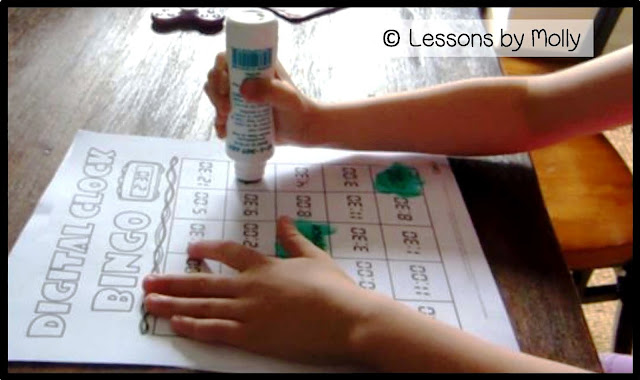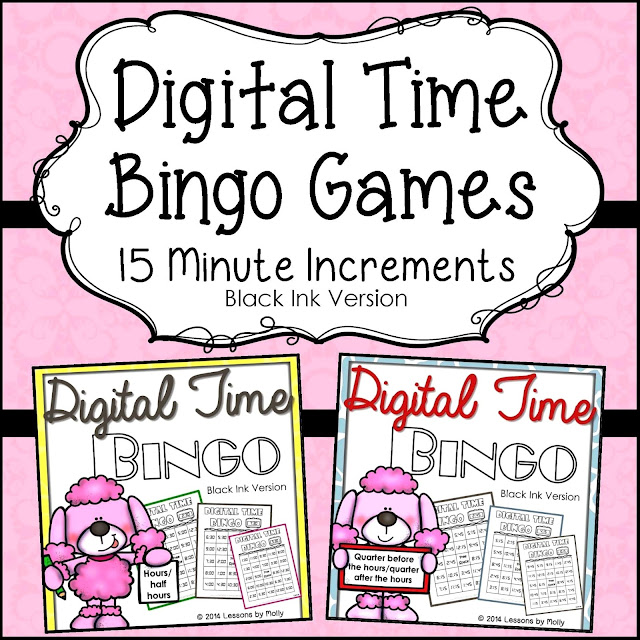It was the first time this little gal used a paint dabber on a bingo game. Boy was she thrilled to have that dabber in her hands!
As you will see in the video segment, she dabs the SAME spot multiple times until I mention to her that she can dab the spot just once.
She's a quick study and does the remainder of the activity with a single dab in each spot!
This was the first time we used my Telling Time Bingo sheets. I wanted to see whether or not she could identify the digital style numeric font that I used in creating the game. This is an essential skill before introducing the analog clocks with the game. She was an instant whiz at it!
The next time we use the Telling Time Bingo sheets we'll play it as a bingo game instead of using it as a following directions activity. We'll also use an analog clock to put telling time to the hours and half hours into practice. I might display at time such as 3:30 on an analog clock (face clock) and ask her to find the corresponding time in digital form on her bingo sheet. This way, she gets exposure to both digital and analog times in the same sitting.
Since I tested her (while video taping), I know she can recognize the digital times. She also has gained confidence about using the digital time bingo sheets which will prepare her for the next level - time elapsed problem solving.
I have several varieties of telling time bingo games. If your are interested, click on any image shown below to view them at my shop.
Telling time to the hours and half hours is a first grade math standard. When students are in second grade, they are required tell time in five minute increments. It's a big jump from reading time by the hours and half hours to reading times for every five minutes. Offering a transitional lesson with times at the quarter hours can bridge the gap between the two standards. Below are some color versions of the same games.
That's all for now!
Molly











No comments:
Post a Comment